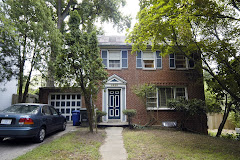Visibility builds awareness, which can lead to understanding.
Buildings and sites connected to historical movements and events create a physical connection with the historical narrative. The sites of queer history, where gay men, lesbians, bisexuals, and transgender people have campaigned for civil rights and built communities, are often invisible to the larger community.
Recognizing these sites, achieving historic preservation status for them, and making them visible marks the queer community as a people with a history that cannot be ignored. It also preserves that history as part of the national story of achieving minority rights and acceptance. For current and future generations, preservation ensures that the physical locations remind ourselves and others of the struggles and creates a visceral connection to that story.
Queer physical history is largely urban. As such it often disappears beneath developers bulldozers. In Washington, DC an entire community of entertainment sites, dating from 1970, fell to bulldozers building a new baseball stadium in 2006. In Los Angeles, the two offices of the Mattachine have been replaced by parking and a newer office building. To date only one site, the Stonewall Inn, has been recognized by the National Park Service as worthy of inclusion on the National Historic Landmarks list. A handful of other sites have been recognized locally.
This blog will profile historic sites not yet preserved, examine the process and hurdles of achieving historic site recognition and preservation, and advocate for heightened preservation campaigning by queer historical and archival organizations, professional archivists and historians, and the public.
The photo on the right is the home and office of Dr. Franklin E. Kameny, the father of militant gay activism from 1961, which has been nominated by Rainbow History for historic site recognition in Washington, DC (more on that later).
Saturday, November 29, 2008
Visible Past
Labels:
bisexual,
gay,
historic sites,
history,
Kameny,
lesbian,
preservation,
queer,
Rainbow History,
transgender,
Washington DC
Subscribe to:
Comments (Atom)



